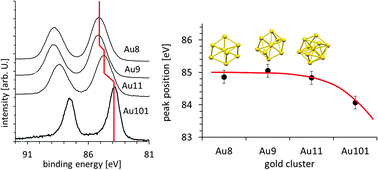Chemically-synthesised, atomically-precise gold clusters deposited and activated on titania†
Abstract

* Corresponding authors
a
The MacDiarmid Institute for Advanced Materials and Nanotechnology, Department of Chemistry, University of Canterbury, Christchurch 8140, New Zealand
E-mail:
vladimir.golovko@canterbury.ac.nz
b
Department of Chemistry, University of Adelaide, 5005, Australia
E-mail:
greg.metha@adelaide.edu.au
c
Flinders Centre for NanoScale Science and Technology, Flinders University, Adelaide SA 5001, Australia
E-mail:
gunther.andersson@flinders.edu.au
d Australian Synchrotron, 800 Blackburn Road, Clayton Vic-3168, Australia

 Please wait while we load your content...
Something went wrong. Try again?
Please wait while we load your content...
Something went wrong. Try again?
D. P. Anderson, J. F. Alvino, A. Gentleman, H. A. Qahtani, L. Thomsen, M. I. J. Polson, G. F. Metha, V. B. Golovko and G. G. Andersson, Phys. Chem. Chem. Phys., 2013, 15, 3917 DOI: 10.1039/C3CP44005B
This article is licensed under a Creative Commons Attribution 3.0 Unported Licence. You can use material from this article in other publications without requesting further permissions from the RSC, provided that the correct acknowledgement is given.
Read more about how to correctly acknowledge RSC content.
 Fetching data from CrossRef.
Fetching data from CrossRef.
This may take some time to load.
Loading related content
